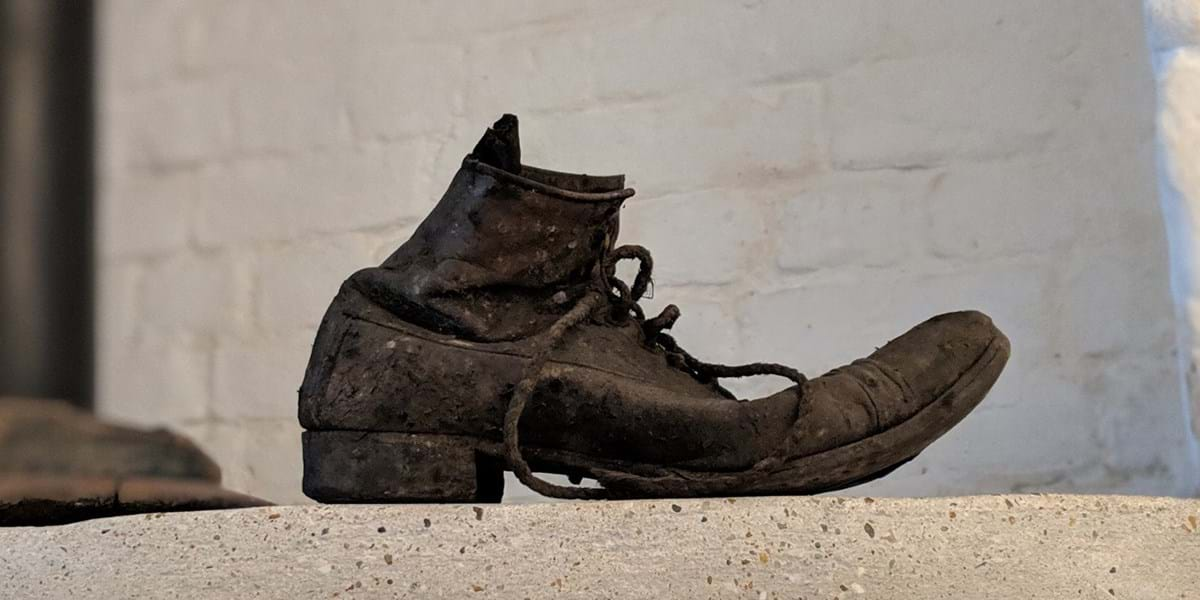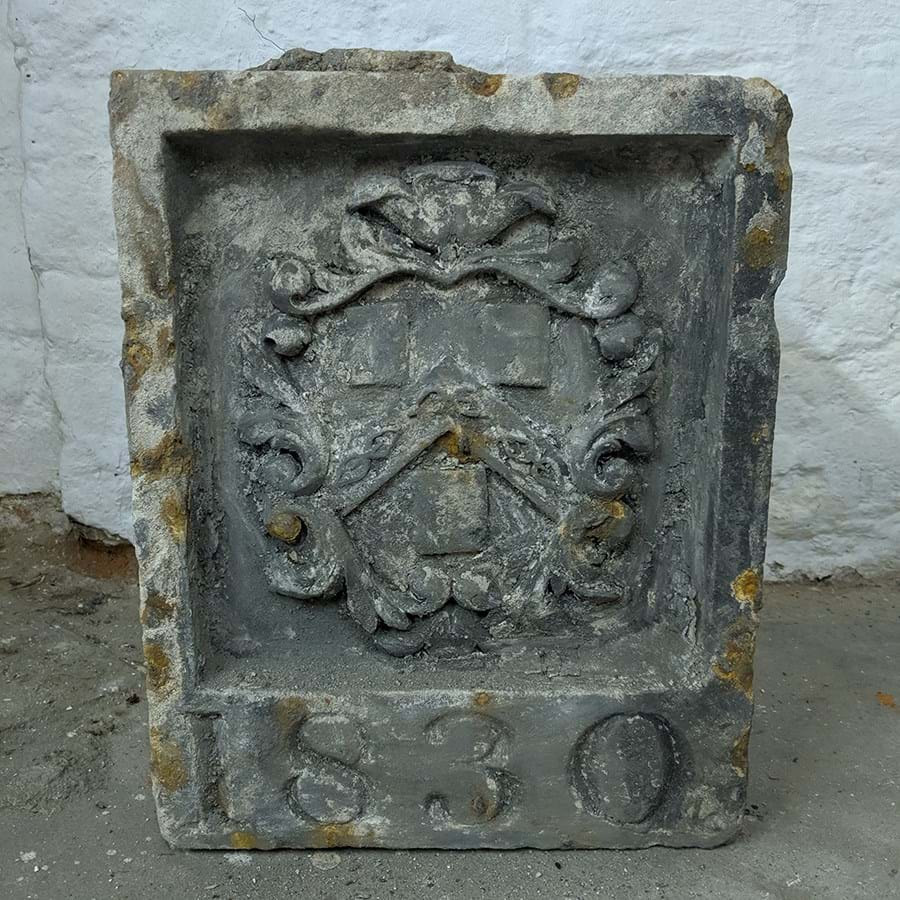Finds during the build
We have been digging underneath our floors, behind our walls, and in our back gardens as we redevelop the Museum.
While we hoped we wouldn’t find one of Richard III’s relatives we were excited to see if we could find out more about the almshouse site and its residents.
A number of objects revealed themselves, creating an insight into life in Hoxton past. So what did we find?

A hidden boot
We were very surprised when we found this old boot up one of our almshouse chimneys.
We suspect someone concealed it there as a way of protecting their home.
Hiding shoes at the threshold of the home was meant to protect against witches or spirits trying to enter and cause harm.
This superstitious practice was popular across the country until the 1900s.
Bottles
When we started digging we found a number of bottles. They would have all had very different contents inside.

Batey glass bottle
A light blue glass bottle with a stopper and the word Batey cast at the bottom.
It probably contained ginger beer as we know Batey had a ginger beer factory on the east side of Kingsland Road.

'Giessen blue' bottle
An earthenware bottle which would have contained 'Giessen blue' ink or dye.
The dye was sometimes used for washing clothes to make them appear whiter.

Poison bottle
There is the message 'Not to be taken' on this tiny green glass bottle.
It might have contained medicine (poisonous if taken in the wrong quantities) or actual poison for rats.
Earthenware fragment
This was the first fragment unearthed in a trial pit in the Gardens Through Time. It is tin-glazed earthenware.
It could be a tile but the concave shape suggests it is probably part of a plate or a dish. It might have had a dual function as a bowl for food and as a room decoration.

Ceramic fragment
This oval-shaped piece of ceramic was found in the soil between the almshouse buildings and Cremer Street.
It is painted blue and white, carved with a crown. It has the letters GR with laurel leaves and a cross. The G stands for George, R stands for Rex, which is King in Latin.
We think it might be the decoration from a chamber pot.

Datestone
This heavy stone object is probably a datestone. It bears the date 1830.
There is no obvious part of the almshouse buildings that it would have been a part of.

Pipe
Our builders found this highly decorated pipe within the ceiling of one of our almshouses.
It is carved and hand-painted with flowers, patterns and a small picture of a scene with a bridge or aquaduct over a river.

